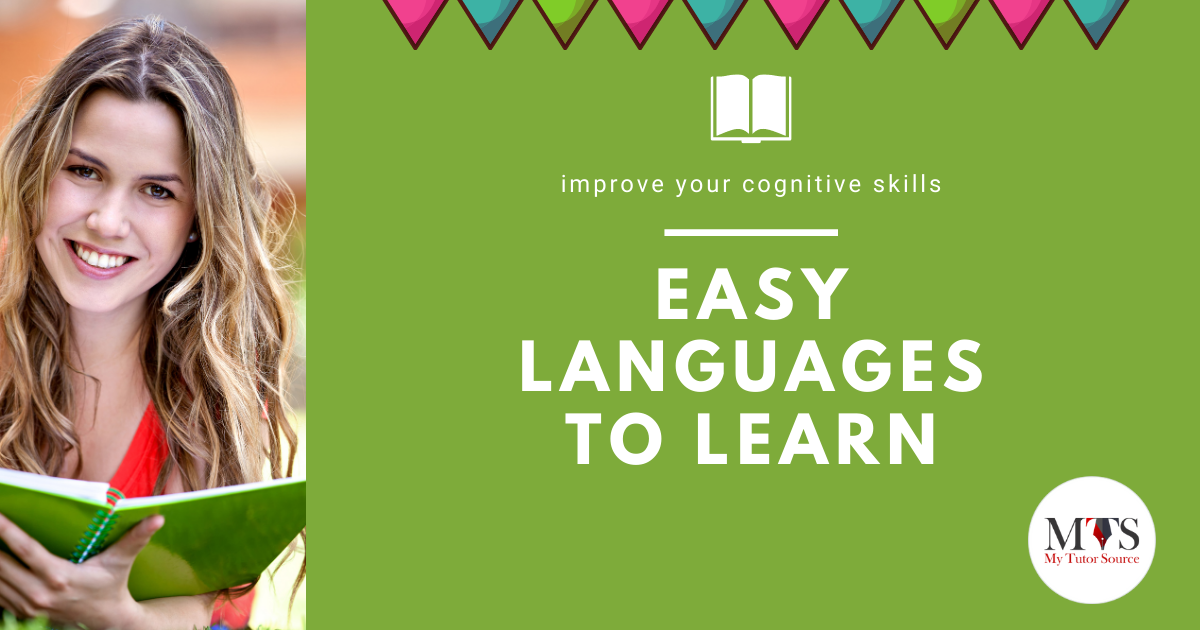
Easy Languages to Learn
Learning new languages can be a fantastic way for children to improve their cognitive skills, plus it can be a fun way to learn more about the words and their many different cultures. Being multilingual can lead to many opportunities that one might not otherwise encounter, such as jobs and friendships.
It makes traveling easier as one can fully immerse themselves in a foreign culture without having to constantly spend time looking up translations in order to understand what is written or what is being said. Knowing but a few languages can allow for easier communication with people in many parts of the world. French, for example, is listed as an official language in 29 different countries, while Arabic is listed in 25.
Language learning also has many health benefits, and the body of evidence suggesting it can combat the effects of dementia and Alzheimer’s is constantly growing. Learning a new language opens new cognitive pathways in the brain which the brain can use to compensate against the effects of the aforementioned diseases in old age. Just think of learning a new language as an exercise to keep your brain fit.
While language learning undoubtedly brings many benefits, it can also be very difficult to get started. Certain languages are easier for people to learn, and a lot of what determines how hard it will become down to the individual.
Your native language can also play a big role, with many languages sharing many words. English speakers, for example, have an easier time learning French, with the languages sharing around 10,000 similar. Exposure to foreign languages also makes it easier, even if you’re just watching a foreign film or T.V show with subtitles. Languages with similar sentence structures to your native tongue also make it easier, an example would be most Scandinavian languages having similar structures to English, making English an easy language for most Scandinavians to master.
So to get you and your kids started on learning new languages, we’ve picked some languages that are generally easy for beginners to learn:
Arabic
Most Pakistanis will already be familiar with Urdu, making Arabic a good starting point when looking for new languages to learn. The two languages share a great deal of vocabulary, though one has to be very good at Urdu for it to make learning Arabic any easier, as most of the overlapping words are used only in very formal Urdu.
One aspect that makes Arabic an easier language to learn for Urdu speakers, is the fact that Urdu and Arabic share the same alphabet. Although the writing style is different, if one already knows how to read Urdu, they will already be familiar with the Arabic alphabet making it unnecessary to learn an entirely new alphabet.
The difficulty here comes from the fact that a few letters sound different in Arabic than they do in Urdu. The grammatical structure of both languages is quite difficult, however, and can prove quite challenging for Urdu speakers to completely master. Arabic is also a very popular language worldwide, with over 270 million speakers.
Punjabi
Probably the easiest language for Urdu speakers to learn is Punjabi. Both languages have basically the exact same sentence structures and grammatical rules, along with very similar vocabularies with the only real differences being in pronunciation. However, most Punjabi speakers will probably be able to understand you just fine, even if you cannot pronounce some words probably, though they may find your mispronunciation quite amusing.
Other local languages that are similarly easy for Urdu speakers to pick up are Seraiki, Hindko, and Hindi, the latter of which is basically the exact same language in speaking, with a few differences in vocabulary.
Spanish
For English speakers, this pick should come as no surprise. Spanish has always been a go-to language for English speakers to learn, due to the prevalence of native Spanish speakers in the English-speaking world, with the U.S, in particular, having a very large population of Spanish-speaking citizens.
Like English, Spanish is also derived from Latin, meaning that many English and Spanish words are derived from the exact same Latin word. An example would be “Delicious” which is “Delicioso” in Spanish, with both being derived from the Latin word, “Deliciae”.
It’s a phonetic language, meaning the words are pronounced the way they’re spelled, and it generally uses a very similar grammatical and tense structure to English. Spanish is also one of the most used languages in the world, with over 500 million native speakers, so learning Spanish will open up many new avenues for you.
French
Another language derived from Latin, French can also be easier to earn for English speakers due to a large amount of shared vocabulary. The similar vocabularies, however, are not only due to the shared Latin ancestry.
England and France have a lengthy history of war and conquest with one another, and during these wars, many parts of both languages were passed from one country to the other.
Words passed in this way include avant-garde and a la carte from French to English, and weekend from English to French. While French pronunciation can be a bit tricky at first, though its prevalence in the world, with over 200 million speakers worldwide, and its popularity in popular culture, can make picking up the accent and pronunciation quite easy.


